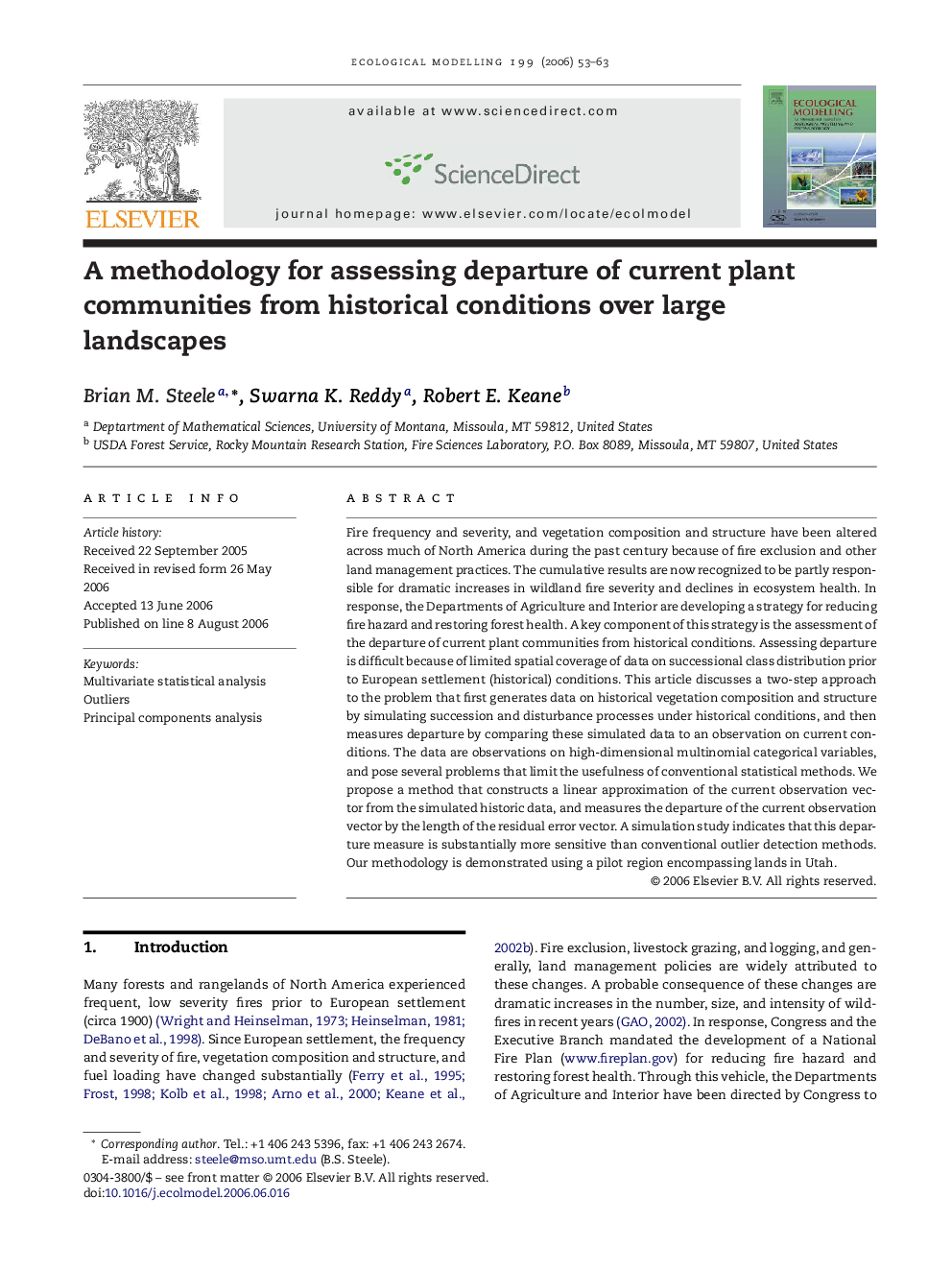| Article ID | Journal | Published Year | Pages | File Type |
|---|---|---|---|---|
| 4379108 | Ecological Modelling | 2006 | 11 Pages |
Fire frequency and severity, and vegetation composition and structure have been altered across much of North America during the past century because of fire exclusion and other land management practices. The cumulative results are now recognized to be partly responsible for dramatic increases in wildland fire severity and declines in ecosystem health. In response, the Departments of Agriculture and Interior are developing a strategy for reducing fire hazard and restoring forest health. A key component of this strategy is the assessment of the departure of current plant communities from historical conditions. Assessing departure is difficult because of limited spatial coverage of data on successional class distribution prior to European settlement (historical) conditions. This article discusses a two-step approach to the problem that first generates data on historical vegetation composition and structure by simulating succession and disturbance processes under historical conditions, and then measures departure by comparing these simulated data to an observation on current conditions. The data are observations on high-dimensional multinomial categorical variables, and pose several problems that limit the usefulness of conventional statistical methods. We propose a method that constructs a linear approximation of the current observation vector from the simulated historic data, and measures the departure of the current observation vector by the length of the residual error vector. A simulation study indicates that this departure measure is substantially more sensitive than conventional outlier detection methods. Our methodology is demonstrated using a pilot region encompassing lands in Utah.
